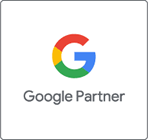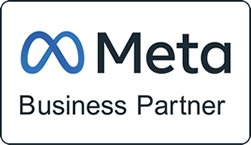With the rise of social media and artificial intelligence, it’s easy to see why marketing pros are obsessed with digital campaigns. But is putting all your marketing eggs in the social media basket always the best idea?
There’s no denying it, we live in a world where social media and digital tech rule. People are deeply connected to platforms like Facebook, Instagram, TikTok, Twitter, YouTube and LinkedIn.
These old-school tactics can be pricey and hard to measure.
That just might be the winning argument for digital campaigns, as digital marketing has proven more effective and less expensive, and one can track performance or its effectiveness more easily.
For any marketing campaign, reaching a large audience is key.
With digital marketing, the potential customer base is as vast as the internet itself. Another win for digital marketing!
It utilises a wide range of channels, including websites, social media, email, mobile marketing, WebTV, video marketing, search engine optimisation (SEO) practices, and pay-per-click campaigns.
The rise of social media and AI has only amplified the benefits of digital marketing.
Social media has proven to be a great for building strong customer connections, loyalty, and relationships through platforms like Facebook, Twitter, and Instagram.
However, without weighing the pros and cons, relying heavily on social media might not always be wise.
Every year, more businesses abandon traditional advertising and pour resources into SEO, Google AdWords, Facebook, Instagram, and more recently even Tik Tok in an attempt to reach a younger, more hip audience.
Meaning… paying for advertising through social media. And getting the most out of paid media campaigns, would mean that marketing professionals must stay on top of the game, constantly monitoring and optimising their campaign.
This involves analysing performance metrics and making data-driven adjustments, adding to time needed and costs.
All pros? Not without cons
A common pain for companies with a tighter budget for paid media campaigns, is just that… they’re on a tight budget.
Budget constraints are a common challenge for companies with limited funds for paid media campaigns.
Marketing professionals at smaller firms need to achieve a higher return on investment (ROI), which can be tricky. With rising costs for paid media, leveraging owned media assets — like websites, blogs, and email lists — becomes increasingly important for cost-effective strategies.
Risk of over reliance. Over-relying on social media is also risky due to frequent algorithm changes and platform-specific issues.
Get everybody on board. Achieving a cohesive strategy requires getting everyone on board, from marketing and sales to customer service and IT. Collaboration ensures that every customer interaction reinforces the brand’s message and values.
Marketing professionals should have a clear picture of how sales are performing. Marketing campaigns are, at the end of the day, about bringing in business.
Don’t forget the basics. A company’s website should be the heart of any campaign, as it’s where you want potential customers to land and generate leads. Keeping the website updated, fully functional, and visible online is crucial.
Following SEO best practices, such as keyword research and site structure, is a good starting point.
Of course, effectively using owned media requires understanding content creation and distribution channels, noting that high-quality, relevant content that resonates with the audience can drive engagement and build brand loyalty.
Sharpen your web writing skills. Boosting your brand with regular features in local traditional media channels, like news outlets, is a fantastic strategy. It also ups your chances of ranking higher on search engines.
Creating quality, authoritative, and authentic content is the top way to improve your search engine rankings.
There’s no substitute for great content, especially in SEO marketing. High-quality content tailored for your target audience increases site traffic, enhancing your site’s authority and relevance.
Sharpen your web writing skills and establish yourself as an authority on your topic.
In conclusion, marketing professionals must look beyond social media to create a comprehensive strategy. While social media is a powerful tool, it should be part of a broader approach that integrates various touchpoints to deliver a unified customer experience.
By leveraging available technologies, optimising paid media, and effectively using owned media, marketers can craft strategies that exceed customer expectations.
The ultimate goal is to create a seamless, engaging, and personalised journey for every customer, ensuring long-term brand loyalty and sustainable growth.











